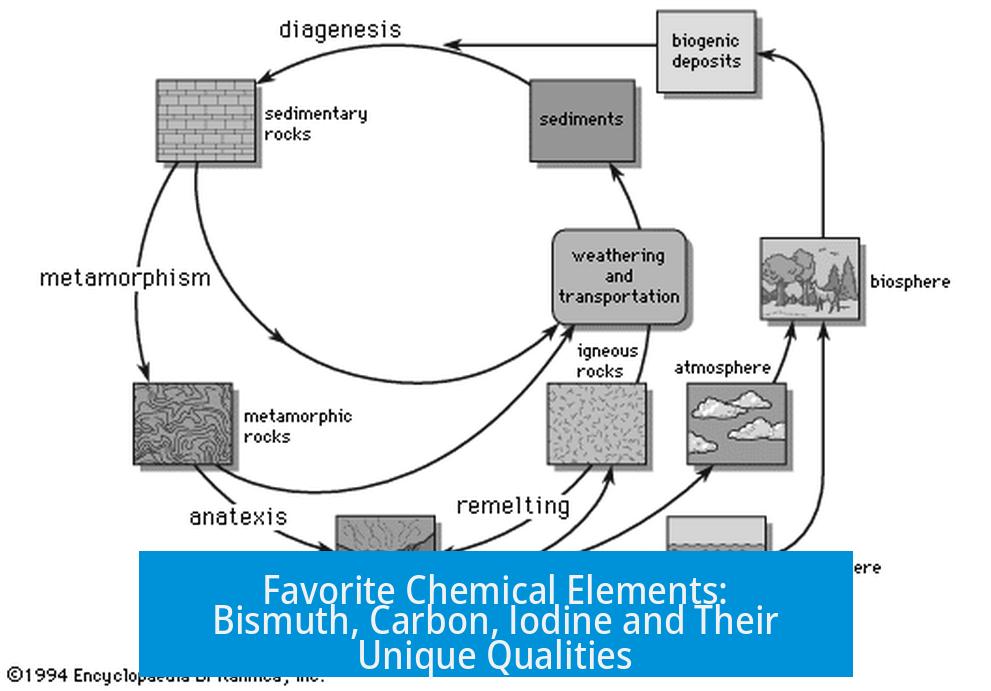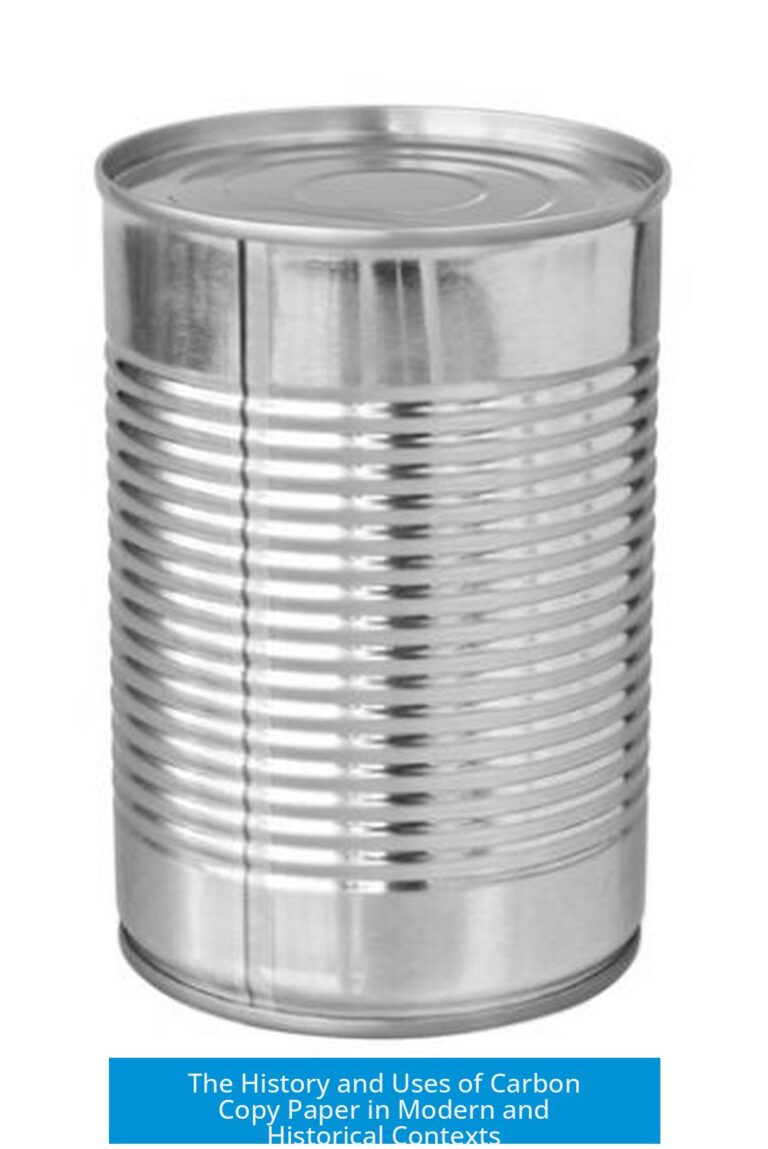What Is Your Favorite Chemical Element and Why?

Among many fascinating chemical elements, bismuth stands out for its unique properties, aesthetic appeal, and practical applications. Its distinct crystal formations, low toxicity, and rare radioactive nature make it a compelling choice. Examining bismuth in comparison to other elements highlights why it captures particular admiration in the chemistry community.
Bismuth: The Unique Metal on the Periodic Table
Distinctive Crystal Structure and Aesthetic Appeal
Bismuth naturally forms intricate, multi-colored, cube-shaped crystals. These iridescent shapes can range in color from pink to blue and green, making them visually striking. Such crystalline beauty is rare among metals, contributing to bismuth’s appeal beyond mere chemical interest.
Safe yet Heavy Metal
Bismuth is the heaviest stable element that is non-toxic and safe to handle. Positioned at the boundary before polonium, which is both radioactive and highly toxic, bismuth represents a unique borderline in the periodic table. Its safety allows applications in pharmaceuticals and consumer products.
Pharmaceutical Applications
- Bismuth compounds treat stomach disorders, including ulcers and indigestion.
- The element is used in antacid formulations due to its low toxicity and medicinal effects.
Chemical Functionality: Sodium Bismuthate
Sodium bismuthate (NaBiO3) is a powerful oxidizing agent. It transforms manganese compounds into permanganate ions, which have medical applications and act as useful oxidizers in chemical synthesis. Such compounds expand bismuth’s role beyond its elemental form into valuable industrial roles.
Almost Stable Radioactive Nature
Although bismuth is frequently considered stable, it is actually very weakly radioactive. Discovered in 2003, it emits alpha particles but with a half-life a billion times longer than the universe’s age. This ultra-slow decay means it behaves as if stable in human timescales yet remains scientifically intriguing.
Periodic Table Position
Bismuth is the heaviest metal in group 15, making it the rightmost metal in the periodic table. Nitrogen and phosphorus also occupy this group as nonmetals. Bismuth’s metallic state and position allow unique chemical behaviors, including interesting oxidation states and bonding patterns.
Why Bismuth Wins
While elements like livermorium may possess metallic traits further right on the table, practical exploration is impossible due to their instability. Bismuth’s stable, tangible existence combined with its striking crystal shapes, low toxicity, and intriguing radioactivity make it a favored element in chemistry.
Other Noteworthy Favorite Elements
Carbon: The Building Block of Life
Carbon’s versatility defines much of chemistry. Its various allotropes—diamond, graphite, and amorphous carbon—showcase different physical properties. Carbon forms the backbone of biological molecules and materials science, making it essential to life and innovative technologies.
- Carbon conducts electricity in graphite form.
- Catalysts like palladium on carbon enhance chemical reactions.
- Carbon-based compounds dominate organic chemistry and biology.
Iodine: The Heaviest Reactive Nonmetal
Iodine is unique among halogens. It is safe enough to handle with bare hands, produces characteristic purple smoke upon heating, acts as a disinfectant, and participates in analytical chemistry by indicating starch presence through a color change to black.
Cobalt: Essential for Life
Cobalt is central to vitamin B12, a critical nutrient for humans. Beyond biochemical importance, cobalt is involved in industrial processes and magnetic materials, making it both biologically and technologically significant.
Tungsten: Strongest Metal with High Melting Point
Tungsten boasts the highest melting and boiling points among elements. Its dense, strong nature allows use in filament wires and heavy-duty alloys. Biologically less toxic and chemically complex, tungsten attracts interest for both material science and chemistry.
Fluorine: The Most Reactive Element
- Fluorine is the strongest oxidizing agent known, capable of oxidizing substances like water.
- It has uses from rocket fuels to inert coatings.
- Its electronegativity influences bonding and molecular properties profoundly.
Comparative Perspectives on Favoritism
Preferences for chemical elements often reflect their impact on daily life, distinctive properties, or personal experiences with them. For example, copper is admired for its electrical conductivity and aesthetic appeal. Nickel is valued for its catalytic versatility and cost-effectiveness. Elements like francium garner interest due to their rarity and exotic names rather than practical uses.
Summary of Key Points
- Bismuth is favored for its colorful crystal forms, safety compared to neighboring elements, pharmaceutical uses, and subtle radioactivity.
- Carbon is essential due to its structural diversity and role in all known life.
- Iodine offers practical uses in medicine, chemistry, and safe handling despite being a halogen.
- Tungsten is notable for its exceptional physical properties and stable chemistry.
- Element preference often depends on unique chemical behaviors, human relevance, and personal or scientific connections.
What Is Your Favorite Chemical Element and Why? Dive Into the Wonders of the Periodic Table!
Ask any chem enthusiast, and they’ll give you an answer with a sparkle—sometimes literally. The question “What is your favorite chemical element and why?” might seem simple, but the answers reveal layers of science, personality, and occasional whimsy. Let’s embark on this journey to explore some dazzling favorites with a special spotlight on one standout: bismuth.
Is there truly a single favorite element? Well, yes and no. People are drawn to elements for various reasons: their appearance, quirky chemistry, biological importance, or just plain fun facts. But if you ask me to pick one, bismuth takes the crown for being a curious marvel that blends art, science, and safety unlike any other.
Why Bismuth Shines Bright on the Periodic Table
Bismuth is that rare gem that combines beauty and intrigue. It forms stunning cube-shaped crystals with a rainbow of colors. Imagine holding a tiny geometric palace of shimmering pastel hues in your hand—talk about a visual treat! It looks like a futuristic sculpture made by nature itself.
Now here’s where bismuth gets extra cool. It’s the heaviest element you can safely handle without turning into a real-life sci-fi horror story. Jump to the next element, polonium—radioactive and downright poisonous. Bismuth sits just on this edge, non-toxic and surprisingly chill, which makes it perfect for uses beyond just pretty rocks.
For example, bismuth-based compounds show up in medicine, helping soothe stomach issues! So, it’s not just a jaw-dropping display of nature’s artwork but a gentle helper inside you. Sodium bismuthate (NaBiO3) is a powerhouse oxidizer, enabling the transformation of manganese compounds into permanganate, a chemical with its own rich legacy in medicine and organic chemistry. A true multitasker!
Hold your scientific breath because here’s a mind-bender: Although bismuth is technically radioactive, its decay is so slow—a half-life a billion times the universe’s age—that for all practical intents, it’s totally stable. Discovered as an alpha emitter only recently (in 2003), it’s the secret almost-serene radioactive element.
Also, bismuth proudly wears the badge of being the rightmost metal in group 15 (the same group as nitrogen and phosphorus). It sits like a little outlier in the corner of the periodic neighborhood.
And to correct some scientific gossip: While Livermorium (element 116) might be further to the right and predicted to have metallic properties, it’s so far out there in the periodic wilderness that no one will likely ever hold or see it. So for all real-world intents and awesomeness, bismuth remains the king.
Bismuth. Because duh.
Carbon: The Queen of Life and Versatility
If bismuth dazzles with looks and quirky stability, carbon commands the throne with versatility and essentiality. Carbon is the building block of all known life. Sure, diamonds are carbon, and so are pencil leads (actually graphite), and so are the coals that fuel many a barbecue or industrial process.
Carbon’s ability to bond in complex arrangements gives us everything from DNA to the smartphone in your hand. It even helps detoxify poisons in medicine and amplifies catalysts like palladium on carbon, accelerating chemical reactions as efficiently as a caffeine boost on a Monday morning.
Those who love carbon also tip their hats to nitrogen, essential for determining protein levels in foods using the Kjeldahl method—a hidden hero behind food science.
Some folks cheekily call carbon “the slut of the periodic table” because it bonds endlessly, everywhere. It’s like the social butterfly element of chemistry.
Iodine: The Purple-Hued Powerhouse
Iodine earns respect for being the heaviest reactive nonmetal that you can handle with bare hands—well, if you’re okay with a purple stain or the smell of its vapors. It’s a halogen with a lot of character. Heat it, and it produces mesmerizing purple smoke. Mix it with ammonia, and you get a mild explosive nitrogen triiodide (handle with care!).
Iodide ions act as antioxidants, and its characteristic black color in the presence of starch makes it a handy test in laboratories. Beyond that, it’s a powerful disinfectant used all over medicine.
Cobalt: The Mysterious Life-Force Metal
Deep down, cobalt is a goblin among elements. It’s not flashy but forms the heart of vitamin B12—essential to human life. Students sometimes bond emotionally with cobalt, especially if their studies involve nutrition and food science, including quirky projects like adding B12 to fruit leathers.
Tungsten: The Wolf of Metals
Tungsten boasts the highest melting and boiling points in the periodic table. It’s super dense and super strong. Tungsten’s chemistry offers quadruple bonds and oxidation states from -2 to +6, keeping chemists busy and fascinated.
It’s biologically important, less toxic than many heavy metals, and its connection to wolves (its name means “heavy stone” in Swedish but the wolves analogy is embraced by fans) adds to its charm. Imagine using the metal that can withstand solar-level heat in high-tech equipment.
More Fascinating Favorites
- Molybdenum: Power player in underground sulfur usage by bacteria. Also just fun to say.
- Fluorine: The strongest oxidizing agent, capable of oxidizing water. Used in rocket fuel and inert coatings—pure badassery in a bottle.
- Iridium: Space metal, rare, dense with the coolest oxidation states (+9!). It helped prove the dinosaur extinction meteor impact and survives the harshest environments.
- Copper: Beloved for conductivity and its beautiful blue salts like cupric sulfate. It’s intertwined with electricity’s discovery and use today.
- Lead: Heavy, deceptively dense, and nicknamed peanut butter by some enthusiasts. Despite toxicity, still crucial in ammunition and electronics.
- Neon: The glowing light show king of the noble gases. Imagine a world washed in neon’s cozy glow. Impossible!
What Makes an Element a Favorite?
Sometimes, it’s raw scientific intrigue; sometimes, personal stories or quirky traits seal the deal.
“I like Yttrium because it has a cool name.”
Truth! Others admire elements for quirky personal reasons, like the appealing sound of “molybdenum,” or the mysterious exotic allure of francium, which is so rare and unstable that it feels like chemistry’s hidden treasure.
Then there are those drawn by pure utility and presence, like oxygen, the breath of life, or nitrogen, the invisible giant composing 78% of our air and freezing things solid in a heartbeat.
The Takeaway? Elements Reflect Us
Each element stands for something unique—beauty, power, complexity, or just pure fun. Bismuth’s gentle safety paired with brilliance makes it a perfect symbol of quiet strength. Carbon’s endless connections mirror life’s complex interweaving. Fluorine’s destructive power contrasts sharply with neon’s gentle glow.
Your favorite element probably says more about you than you realize. Are you drawn to the flashy, the rare, the useful, or the mysterious? Is it the visual wonder, the biological importance, or the sheer cool factor?
So, What’s Your Favorite Element—and Why?
Maybe you love bismuth for its sparkling crystals and surprising stability. Or perhaps carbon’s versatility and foundational role in life captivate you. Could it be the vibrant glow of neon lights, the mystique of francium, or the life-saving touch of oxygen?
Whichever element gets your heart racing, the periodic table offers a universe of stories, facts, and marvels just waiting to be discovered.
So next time someone asks, you can share not only your favorite element but why it literally rocks your world—scientifically and personally.
Final Fun Challenge
Why not pick an element and learn one new quirky fact today? You might find your next favorite. Or maybe, inspired by bismuth, you’ll start collecting tiny colorful crystals as a hobby. Chemistry doesn’t have to be just in textbooks—it can be part of your everyday wonder.
Ready to answer, “What is your favorite chemical element and why?”? Go ahead! The periodic table is listening.
What makes bismuth a unique favorite element?
Bismuth forms colorful cube-shaped crystals. It is non-toxic yet very heavy. Its low radioactivity is almost undetectable, making it safe for pharmaceuticals. It’s the only metal in group 15 and has interesting chemical uses.
Why is carbon considered essential among chemical elements?
Carbon is the backbone of all life forms. It forms diamonds, graphite, and charcoal. Carbon is key in medicine, catalysts, and electrical conductors. Its versatility in structure and use makes it vital to many fields.
What interesting properties does iodine have?
Iodine is the heaviest reactive nonmetal and a halogen you can handle safely. It creates purple smoke when heated and turns black with starch. It’s used as a disinfectant and in making non-toxic explosives like nitrogen triiodide.
Why do some people favor cobalt as an element?
Cobalt plays a critical role in biology as the central atom of vitamin B12. It is essential for life despite being rare. Personal connections like research or studies often increase appreciation for cobalt.
What makes fluorine stand out among other elements?
Fluorine is the strongest oxidizing agent known. It can oxidize water and form inert coatings. Highly electronegative, it induces positive charges on atoms. Its powerful reactions and versatility draw interest.
Why do some prefer tungsten as a favorite element?
Tungsten has high melting and boiling points. It’s dense, strong, and biologically useful. Its chemistry involves unique bonds and oxidation states. Its symbol W relates to “wolves,” adding to its appeal.





Leave a Comment